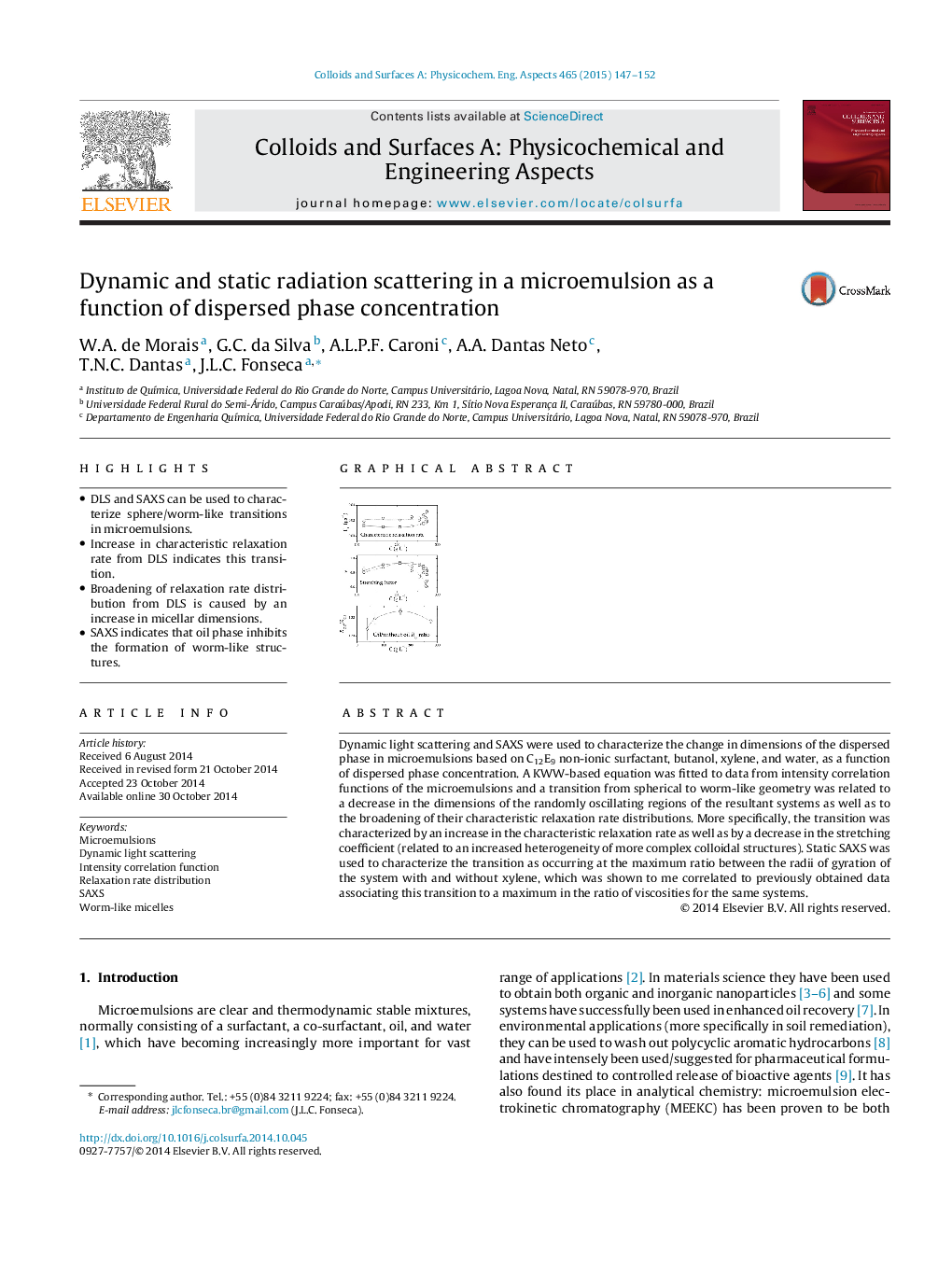| Article ID | Journal | Published Year | Pages | File Type |
|---|---|---|---|---|
| 592456 | Colloids and Surfaces A: Physicochemical and Engineering Aspects | 2015 | 6 Pages |
•DLS and SAXS can be used to characterize sphere/worm-like transitions in microemulsions.•Increase in characteristic relaxation rate from DLS indicates this transition.•Broadening of relaxation rate distribution from DLS is caused by an increase in micellar dimensions.•SAXS indicates that oil phase inhibits the formation of worm-like structures.
Dynamic light scattering and SAXS were used to characterize the change in dimensions of the dispersed phase in microemulsions based on C12E9 non-ionic surfactant, butanol, xylene, and water, as a function of dispersed phase concentration. A KWW-based equation was fitted to data from intensity correlation functions of the microemulsions and a transition from spherical to worm-like geometry was related to a decrease in the dimensions of the randomly oscillating regions of the resultant systems as well as to the broadening of their characteristic relaxation rate distributions. More specifically, the transition was characterized by an increase in the characteristic relaxation rate as well as by a decrease in the stretching coefficient (related to an increased heterogeneity of more complex colloidal structures). Static SAXS was used to characterize the transition as occurring at the maximum ratio between the radii of gyration of the system with and without xylene, which was shown to me correlated to previously obtained data associating this transition to a maximum in the ratio of viscosities for the same systems.
Graphical abstractFigure optionsDownload full-size imageDownload as PowerPoint slide
